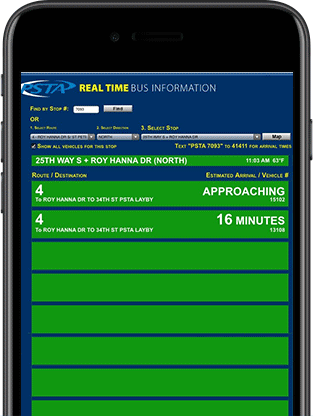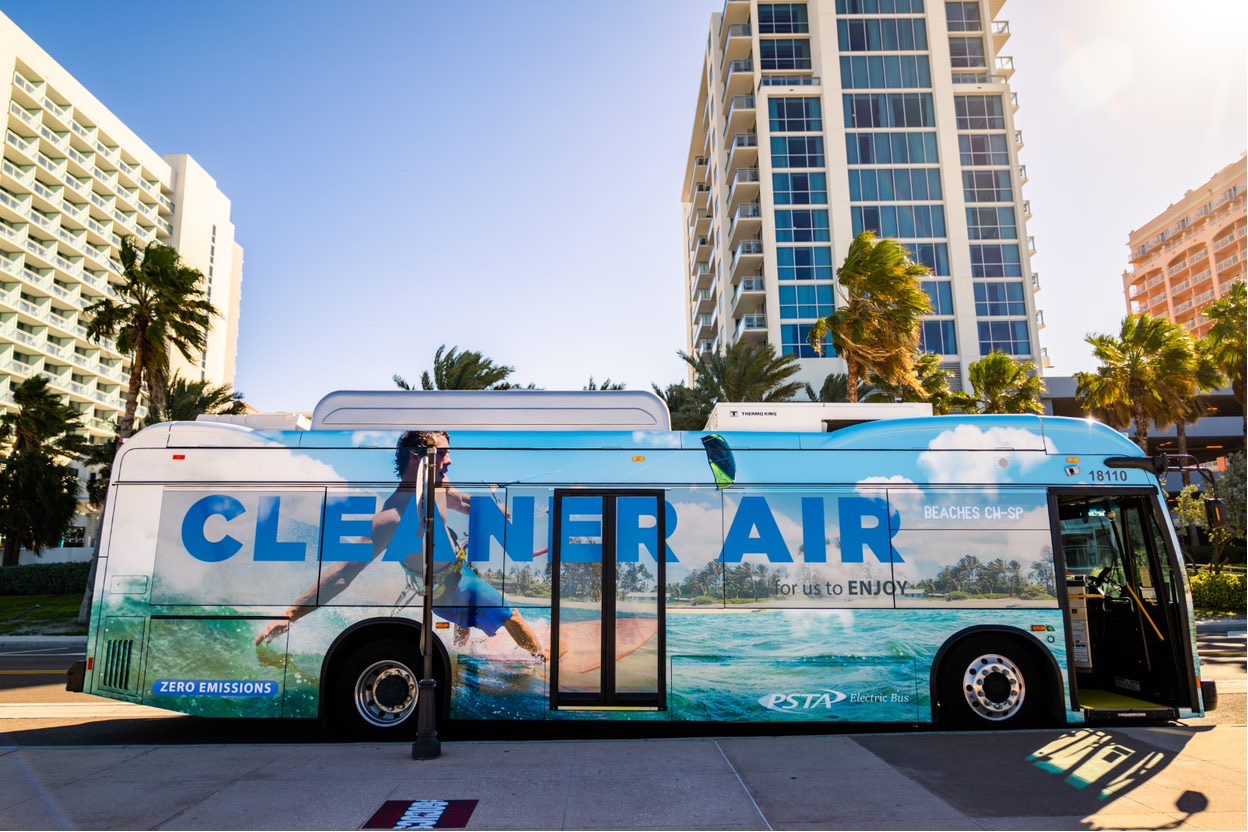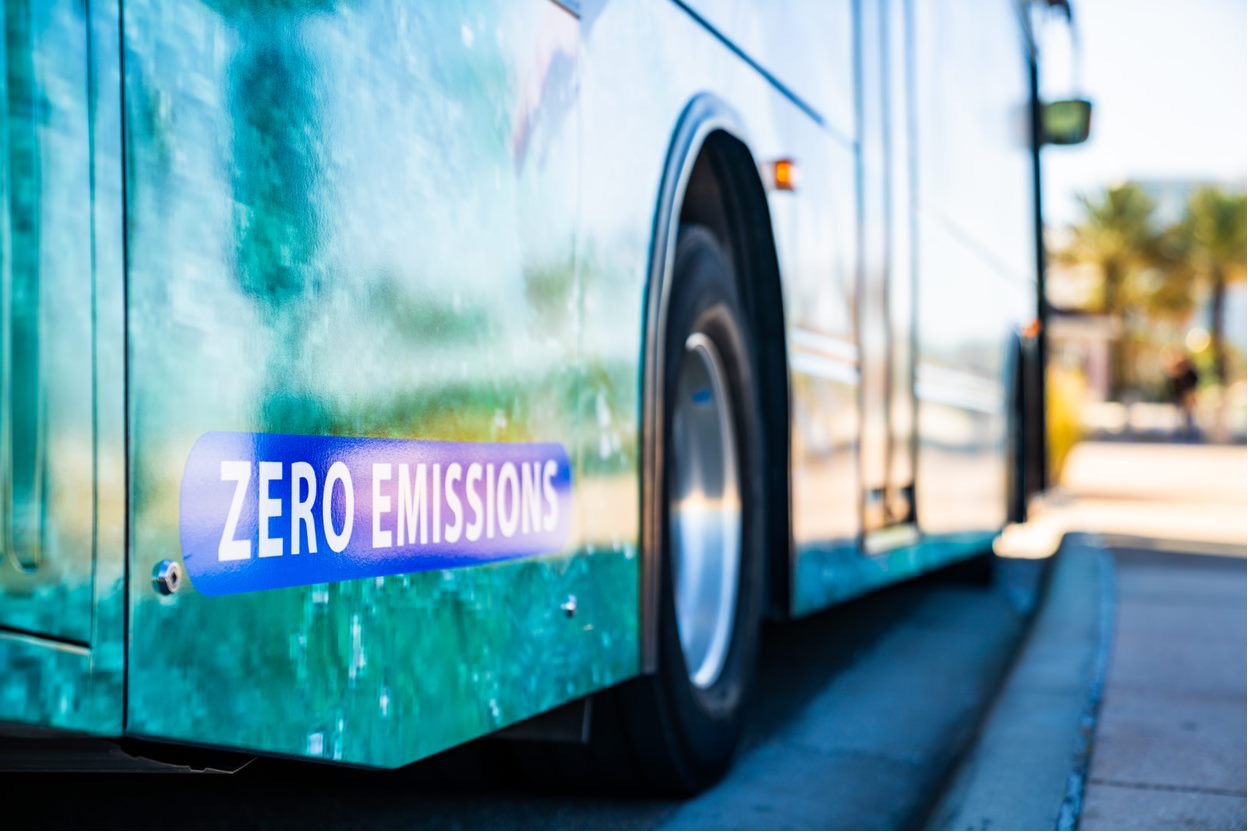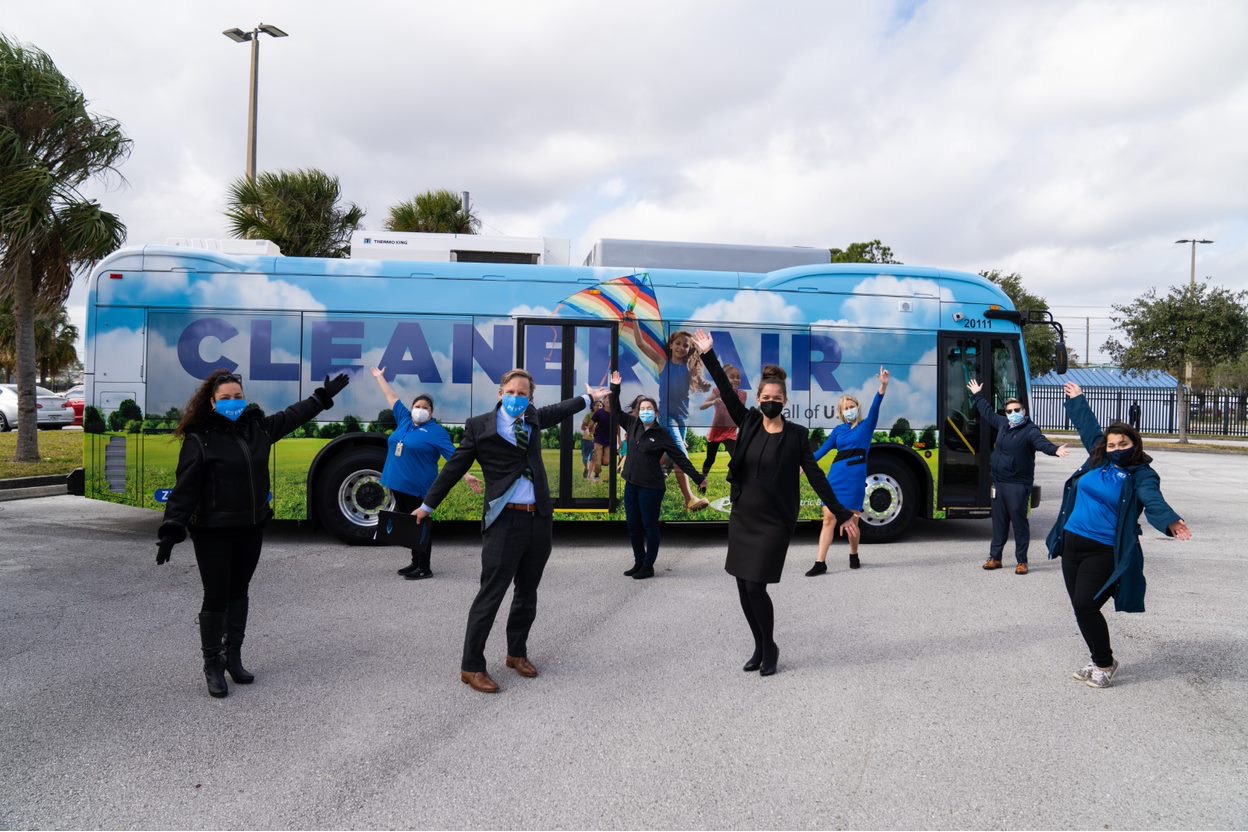PSTA electric bus in the wild!
Earth Month is here! In the spirit of sustainability and our continuing stewardship of this incredible planet, we wanted to highlight our electric buses. As electric and hybrid vehicles are rising in popularity—and affordability—we believe it’s essential for public transit to evolve as well.
Electric Bus Basics
PSTA currently has six BYD electric buses in its fleet, with a 62 GILLIG bus order currently in progress. While this order will take some time to fulfill, six will arrive in July of 2023 and be in service by the end of the year, with the rest to come in the following two years.
“Zero Emissions” on a PSTA electric bus
When discussing electric buses, the topic can become very technical very quickly, but fear not! You don’t need an engineering degree to know the basics.
Features of the GILLIG electric buses include:
- 686 kWh lithium-ion batteries
- ~225-mile range on a single charge
- Electric A/C & heating, power steering, and other onboard accessories
- UV air filtration destroys all bacteria or mold (helps with odor, too)
- A more quiet, comfortable ride thanks to some interior design changes inside
- Better interior climate control thanks to electric A/C & heating
Not only will these GILLIG buses provide a smooth, comfortable ride for passengers, but they will drive like a dream. These new buses will have double the battery power of the ones currently in our fleet, a vital attribute when considering what bus PSTA should assign to the longer routes.
But what about charging? Well, PSTA currently has seven charging stations on campus. The GILLIG buses will use ChargePoint chargers, which provide a full charge in 2 to 3 hours. When it comes to completely electric vehicles, every bit of power counts, from how the operator drives the vehicle to what roads the bus is driven on.
While gas-powered vehicles tend to be more efficient on highways and interstates with few stops, electric buses actually do far better when stopping and starting in traffic. This feature is because electric buses can actually regenerate energy through braking, something operators do less of while on major highways.
Electric Buses vs. Diesel Buses
There’s no question that the emissions from diesel buses contribute to the build-up of greenhouse gases in the atmosphere. Of course, the most obvious benefit of electric buses is the lack of tailpipe emissions, but let’s really dive into the details.
While our current diesel and hybrid buses meet all EPA certifications and exhaust after-treatment requirements, we know that the future is electric. By replacing PSTA’s diesel fleet with electric buses, we will be removing 102 metric tons of carbon emissions and reducing fuel consumption by 13,500 gallons per bus per year.
The reality is that internal combustion engines do more than negatively affect the climate—they negatively affect public health. Some of the biggest dangers of gas-powered, internal combustion engines include:
- Ground-level ozone: “a severe irritant responsible for the choking, coughing, and stinging eyes associated with smog”
- Particulate matter: tiny solid particles and drops of liquid traveling into the lungs and causing “increased respiratory problems and disease, decreased lung function, alterations of the body’s defense systems, and premature mortality”
- Carbon monoxide: a colorless, odorless gas that prevents the body from taking up oxygen, causing "dizziness, headaches, fatigue, visual impairment, reduced work capacity, reduced manual dexterity, and poor learning ability"
- Nitrogen dioxide: contributes to the formation of smog, increases susceptibility to respiratory infections, and is linked to asthma and heart attacks
Data from the US Department of Transportation Federal Highway Administration
Challenges with Electric Buses
Although electric buses are the clear winner when it comes to sustainability and public health, they still come with their own set of challenges. For one, electric buses are very expensive compared to their diesel-powered counterparts, coming in at about $1 million per bus.
Electric buses also pose some serious safety risks, namely due to the batteries, which operate at 600 volts. The battery is separated into sub packs and installed in several locations on the bus. The wiring between these subpacks needs to be routinely inspected for possible corrosion and damage, which exposes technicians to these high voltages.
Hybrid Electric bus batteries are assembled in one single pack and require replacement after about 7-8 years due to out-gassing and corrosion inside the pack. PSTA saves $50,000 per battery by handling this task in-house. Because the maintenance team proactively cleans and replaces these parts in the presence of high voltage, each team member must undergo additional safety training and precautions.
As we make this transition to fully electric, there are also some growing pains for operators. All operators will need to undergo four months of training to learn the new steering system and driving techniques for optimal safety and power conservation. How electric buses are driven matters a great deal when it comes to power use. This fact becomes a key challenge when it comes to going electric, as the bus cannot continue operation once the battery falls below 20%.
The Future of PSTA Electric Buses
PSTA is excited to continue paving the way towards a lower emission fleet. However, we are keenly aware of these challenges and the future adjustments we’ll undoubtedly need to make as we enter this new era of sustainable public transit.
As we begin planning for the new Clearwater Multimodal Transit Center, charging ports for electric buses will no doubt strengthen the possibilities for a fully electric fleet. And as charging technology rapidly improves, who knows how much farther we’ll be able to go on a single charge!





